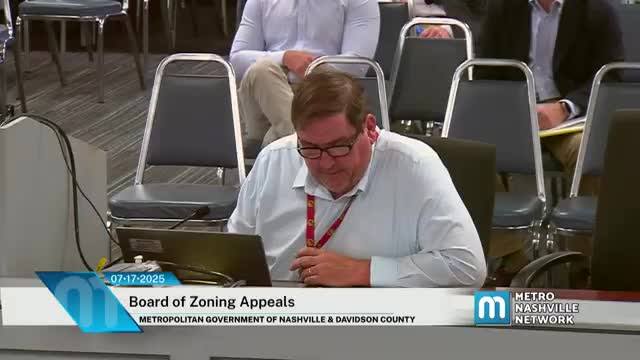Lamar Outdoor Advertising requests variance for digital billboard near residential zones
July 18, 2025 | Board of Zoning Appeals Meetings, Nashville, Davidson County, Tennessee
Thanks to Scribe from Workplace AI , all articles about Tennessee are free for you to enjoy throughout 2025!

This article was created by AI using a video recording of the meeting. It summarizes the key points discussed, but for full details and context, please refer to the video of the full meeting. Link to Full Meeting
John Michael, an attorney representing Lamar, presented the case, emphasizing the use of light mitigation technology that minimizes light spill from digital billboards. He explained that this technology allows for a more focused light projection, reducing the impact on nearby residential areas. According to Michael, the closest residentially zoned property is approximately 267 feet away, but due to the nature of the billboard's light arc, many nearby properties would not be affected by the light emitted.
The board members expressed concerns about the implications of granting such a variance, particularly as the Green Hills area is undergoing significant changes, including the introduction of new residential developments. One board member raised questions about the potential light exposure for residents in nearby apartment buildings, suggesting that the illuminated billboards currently in use might emit more light than the proposed digital billboard.
Michael responded by asserting that the digital billboards would likely produce less light than existing illuminated signs, thanks to their advanced design. He also clarified that while the nearest residentially zoned property is close, it falls outside the effective light projection area of the billboard.
The board's deliberations highlighted the tension between evolving technology and existing zoning laws, with members acknowledging the need for potential revisions to the ordinance to better reflect current practices. The meeting concluded with the board considering the merits of the variance request, weighing the benefits of modern billboard technology against the need to protect residential areas from light pollution. As Nashville continues to grow and adapt, the outcome of this case may set a precedent for future zoning decisions in the city.
Converted from 07/17/25 Board of Zoning Appeals meeting on July 18, 2025
Link to Full Meeting
Comments
View full meeting
This article is based on a recent meeting—watch the full video and explore the complete transcript for deeper insights into the discussion.
View full meeting
